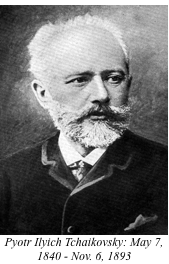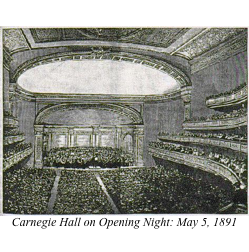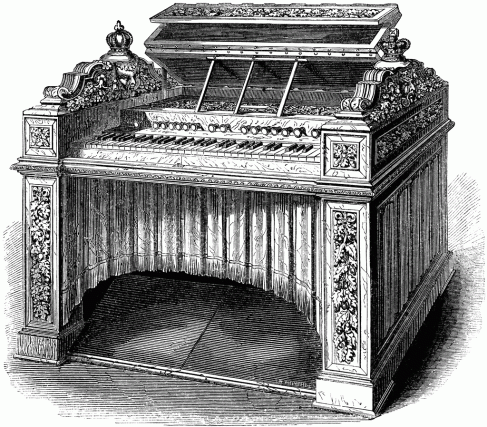Pyotr Ilyich Tchaikovsky is one of the most beloved composers of the classical tradition. He was also the first Russian composer to truly touch the heart of Western audiences. He entered the musical landscape at a time when the Russian classical tradition was in a period of self-invention and composers felt responsible for creating a new Russian voice. Tchaikovsky’s own lushly Romantic sound gained him widespread success, bringing his music to an international audience on a level unmatched by any Russian composer before him. During his lifetime, he would be presented by Tsar Alexander III with The Order of St. Vladimir, receive an honorary Doctor of Music from Cambridge University, and have his works widely performed in Europe and The United States.
The young Tchaikovsky would doubtlessly have been surprised by his later fame. The son of a mining engineer, he did not come from a highly musical background. Nevertheless, he had an early interest in music, beginning piano studies at age five and learning to read with alacrity. However, when the family hired a composition instructor, Rudolph Kundinger, for their son, he was unimpressed with Tchaikovsky’s skills. The young composer would not have any serious formal training until later in life. As an adult, he began a career with the Russian Ministry of Justice working as a clerk, until lessons with Nikolay Zaremba of the Russian Musical Society led him back to music. He finally entered The St. Petersburg Conservatory in 1862, where he began studying in earnest with conservatory founder and director Anton Rubinstein.
The conservatory gave him a solid foundation in the Western classical tradition. While many of his contemporaries were rejecting the classical approach in favor a more nationalistic sound, Tchaikovsky loved Mozart, Beethoven, and other great Western composers and the culture they represented. His talent manifested itself early: Even before graduating from the conservatory, his work had been conducted by Johann Strauss and publicly performed. After completing his studies, he began working as a harmony professor with The Moscow Conservatory, at the same time steadily building his musical career, finding important supporters like German conductor and composer Hans von Bülow, who helped him make a name for himself in Europe. His career would quickly blossom, and he would soon find himself on the international stage, being compared to contemporaries like Camille Saint-Saëns and appearing at American and European premiers, even serving as a guest conductor at Carnegie Hall’s inaugural performance!
Despite Tchaikovsky’s immense professional successes, his personal life had a somewhat tragic trajectory. He lost his mother to cholera at age fifteen and spent a great deal of time in poverty, overspending even when his income should have left him comfortable. He struggled throughout his life with his homosexuality, undertaking a poorly conceived marriage in 1877 which ended in separation in less than two weeks and eventually led him to a near breakdown. He spent a fair amount of time in Europe and was known for his wanderlust. He died in 1893 after drinking unboiled water and contracting cholera, nine days after the premiere of his last publicly performed composition, Symphony No. 6, also known as the Symphonie Pathétique.
Throughout his life, he relied on music as an emotional outlet. Perhaps it is because of the passion behind his music that audiences remain so moved by his works. According to Oxford Music Online, he is the second most popular composer of the 20th century, ranked only by Beethoven. Timeless favorites like The Nutcracker remain in heavy circulation and have entered so completely into popular culture that they can be found referenced in media like film, TV, and even video games. Other well-known works include Swan Lake, the 1812 Overture, his tragic opera Eugene Onegin, and many of his symphonies.
THIS WEEKEND ONLY:
Buy one ticket and get $5 off another!
DISCOUNT CODE: RUSSIAWITHLUV
Offer valid until Sunday, March 31 @ 11:59pm. Subject to availability. Limit offers 3 per person.





